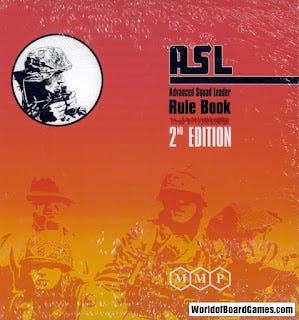
In the early 1980s, when I was serving in the US Marine Corps, I used the scenarios, boards, and playing pieces from the Squad Leader series of small-unit war games to create both tactical decision games (TDGs) for my Marines and free war games to play with my brother officers. I found this worked very well and, in particular, allowed the players to overcome one of the great obstacles to playing board war games, that of the need to master formal rules.
During Operation Desert Shield (1990-1991), another lieutenant of American Marines used elements of the Advanced Squad Leader system to simulate the task of breaking through an Iraqi defensive system. (The story of this use of a commercial board game can be found in the very first issue of Recon by Fire, the magazine published by Heat of Battle Games.) A few years ago, Lieutenant Colonel Ivor Gardiner of the British Army used a similar approach to train the junior officers of the 1st Battalion of the Royal Irish Regiment.
In the winter and spring of 2018, I employed the "Days of Villainy" module from the "Lock and Load Tactical System" to introduce active-duty Marines to the use of the maps, playing pieces, and scenarios from commercial board war games to create "free Kriegsspiel" exercises. I am happy to report that the experiment was a happy one. One group began to play after five minutes or so of explanation. Another required no explanation at all. (I simply handed them the package and asked "How would you use this to train your Marines?")
While the experiment encourages me to continue to promote this technique, I suspect that there was some "selection bias" in the assembly of the groups. All of the Marines had worked through several decision-forcing cases, most were familiar with well-taught tactical decision games (TDGs), and about half had worked through an exercise in which they learned, by stages, the rules to the Pub Battles series of table-top games.








